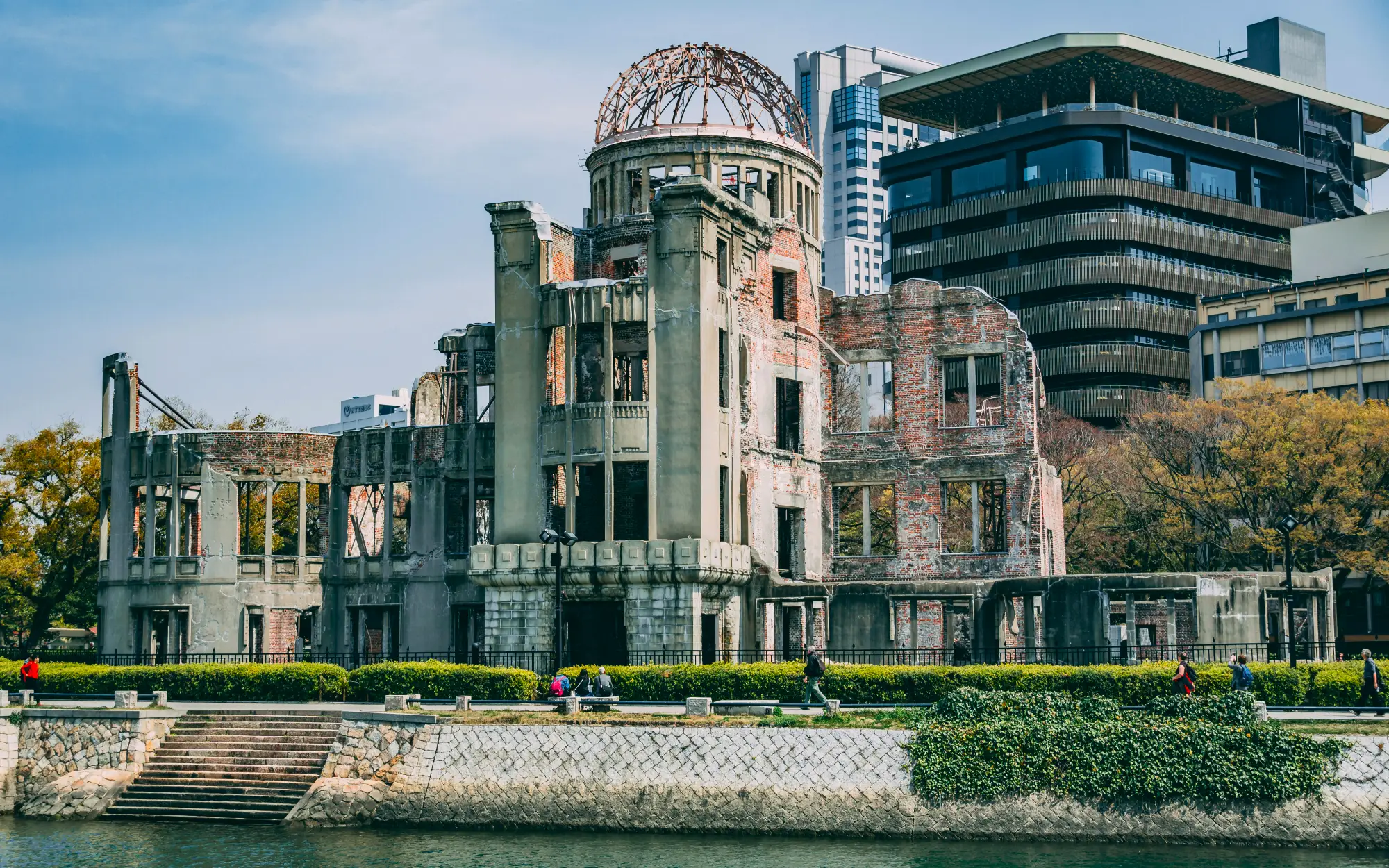
Genbaku Dome, the Hiroshima Peace Memorial
In the bustling city of Hiroshima, Japan, the Genbaku Dome stands as a somber testament to one of the most pivotal and tragic moments in modern history. Also known as the Hiroshima Peace Memorial, this structure is the only building left standing near the epicenter of the first atomic bomb that exploded on August 6, 1945. Today, it is a powerful symbol of the destructive forces of war and a beacon of hope for world peace.
Originally known as the Hiroshima Prefectural Industrial Promotion Hall, the Genbaku Dome was designed by Czech architect Jan Letzel and completed in 1915. Its dome was a distinctive feature, emblematic of the city's modernization and cosmopolitan aspirations. However, the atomic bomb explosion transformed it into a stark reminder of the horrors of war. The fact that it remained standing, amidst the widespread destruction, has made the Dome an enduring symbol of resilience.
On the morning of August 6, 1945, at 8:15 AM, an American B-29 bomber dropped the "Little Boy" atomic bomb over Hiroshima. The explosion obliterated the city, instantly killing tens of thousands and leading to the eventual death of over 140,000 people. The Genbaku Dome, located just 160 meters from the hypocenter, miraculously remained standing, its skeletal structure a silent witness to the devastation.
In the aftermath of the war, there was debate over what should be done with the Dome. Some advocated for its demolition, while others saw it as a critical memorial. In 1966, Hiroshima City decided to preserve the site permanently. The Genbaku Dome's preservation serves as a stark visual representation of the destruction of nuclear warfare and a poignant reminder of the need for peace.
The Genbaku Dome has become a universal symbol of peace and the human cost of war. It stands not only as a memorial to those who lost their lives in the bombing but also as a reminder of the resilience of the survivors, known as the hibakusha. Their stories and experiences, passed down through generations, have played a crucial role in shaping global perspectives on nuclear disarmament and peace.
Surrounding the Genbaku Dome is the Hiroshima Peace Memorial Park, a space dedicated to peace and reflection. The park features various monuments, including the Children's Peace Monument and the Hiroshima Peace Memorial Museum. Each year, on August 6, the park hosts the Hiroshima Peace Memorial Ceremony, an event marked by solemn reflections, prayers, and commitments to peace.
Standing amidst modernity in Hiroshima, the Genbaku Dome, also known as the Hiroshima Peace Memorial, is a haunting reminder of the devastating impact of nuclear warfare and a poignant symbol of enduring peace and hope.

This building was the closest structure that resisted the impact, becoming the Hiroshima Peace Memorial.
Adjacent to the Genbaku Dome, the Hiroshima Peace Memorial Museum offers a deeply moving and educational experience. The museum presents the history of Hiroshima, details of the atomic bombing, and its aftermath, including personal belongings, photographs, and testimonies from survivors. The museum plays a vital role in educating visitors about the consequences of nuclear warfare and the importance of peace.
The Genbaku Dome has become a focal point for global peace advocacy. It is a place where people from around the world, including world leaders and peace activists, come to pay their respects and renew their commitment to preventing such a tragedy from ever happening again. The site's universal message transcends borders, cultures, and generations.
Preserving the Genbaku Dome has presented unique challenges. The structure, exposed to the elements, is vulnerable to deterioration. Continuous efforts are made to conserve and maintain the Dome, ensuring that this powerful symbol endures for future generations to witness and reflect upon.
The Genbaku Dome's presence in modern Hiroshima is a powerful juxtaposition. Amidst the city's vibrant, rebuilt urban landscape, the Dome stands as a somber reminder of the past. This contrast underscores the city's remarkable recovery and transformation into a thriving metropolis dedicated to promoting peace and understanding.
For visitors, the Genbaku Dome is a place of contemplation and education. It evokes a range of emotions, from sorrow and empathy to hope and determination. The experience of standing before the Dome, contemplating the events of 1945, often leaves a lasting impression, reinforcing the necessity of peace and the shared responsibility to prevent future conflicts.
The Genbaku Dome in Hiroshima is more than a historic landmark; it is a poignant symbol of the human capacity for destruction and the enduring spirit of hope and peace. Its preservation serves as a constant reminder of the tragic consequences of war and the collective responsibility to foster a world free of nuclear weapons. As a site of reflection and education, the Genbaku Dome continues to inspire visitors from around the globe, echoing a powerful message of peace and the need for a harmonious coexistence.
Welcome to Japan!
Another interest sights
Japan
The Great Torii Gate of Itsukushima Shrine, one of Japan's most iconic images
Japan
Iwami Ginzan: the legacy of the cultural heritage of silver mining in the heart of Japan
Japan
Elixir of the Gods, a luxurious journey through Kyoto's Fushimi Sake District
South Korea
Share this Sight with: